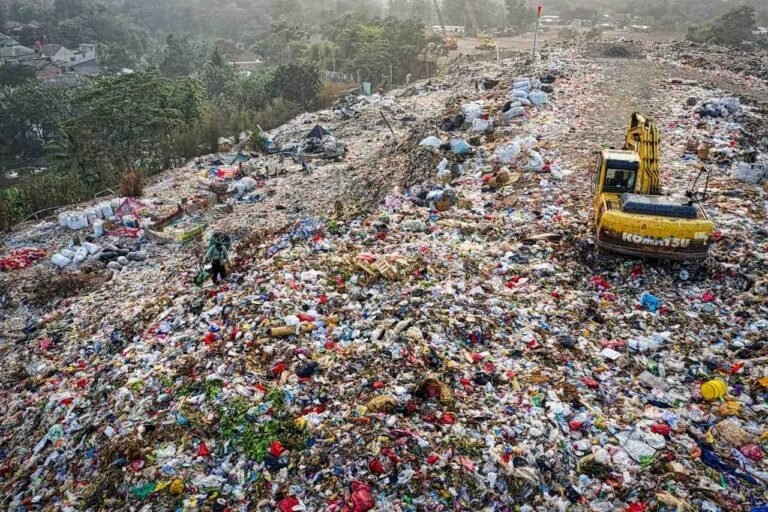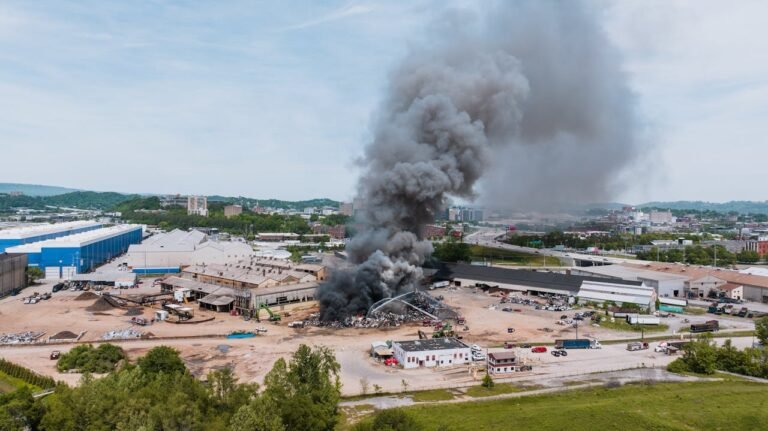Outdoor Air Pollution Significantly Affects Indoor Air Quality, Studies Reveal
We tend to think that stepping inside cuts us off from outdoor pollution, and it’s a comforting thought. But as newer research shows, that’s not always true. Even indoors, we’re breathing what’s drifting outside.
A 2025 study at the University of Utah helps explain why. Researchers placed sensors across 17 indoor and two outdoor spots on campus to track PM₂.₅ levels. They found that during wildfire events, buildings with air-side economiser HVAC systems—which pull in outside air to reduce energy use—had significantly higher indoor particle levels. On average, about 37% of outdoor fine particles made their way inside. These systems were less effective at filtering out smoke, allowing wildfire-related particles to pass through, while dust storms or winter inversions had much less impact on indoor air.
Earlier research backs this up. A 2018 case study from the same university found that during a wildfire event, indoor PM₂.₅ levels reached up to 78% of what was measured outdoors in one commercial building. That building also relied on an air-side economiser system, highlighting how design choices can amplify exposure.
What’s an air-side economiser? It’s a component in many commercial HVAC setups that opens dampers to bring in outside air when the temperature is ideal, helping to save energy. But on smoky days, that’s a problem, since some smoke particles can slip through standard filters.
Other studies reinforce this. A Canadian campus study found that 71% of buildings saw indoor PM₂.₅ spikes over health limits during wildfire smoke events, even with mechanical ventilation. And research from diverse settings shows that building protection varies—winter inversions and dust often stay out, but wildfire smoke and fireworks more easily penetrate indoors.

Why It Matters: Health Risks Behind the Numbers
According to the World Health Organisation (WHO), outdoor pollution contributes to around 7 million premature deaths each year, with roughly 4.3 million attributed to indoor pollution in lower-income regions.
Even in wealthier countries, the mix of outdoor contaminants and indoor factors can pose serious threats. A landmark U.S. study of nearly 6,500 NHANES participants found that when outdoor pollutants like PM₂.₅, NO₂, or ozone combined with indoor bacterial endotoxins, the risk of asthma episodes jumped fivefold. This reveals a clear synergy: air pollution both inside and outside interacts in ways that multiply harm.
Wildfire-prone areas add another layer of danger. A global study showed over 1 billion people experience at least one day each year where indoor PM₂.₅ levels exceed WHO guidelines due to wildfire smoke, even when people stay indoors. Those particles are associated not only with lung and heart disease but also with cognitive decline, dementia, and premature death.
Real‑Life Experiences and Stories
1. Krista’s Hidden Hazard—Beryllium from a Wildfire
When wildfires swept through Los Angeles earlier this year, Krista Copelan thought closing windows would keep her home safe. But weeks later, she started coughing inexplicably. It turned out beryllium—a toxic metal released by burning household electronics and materials—had silently drifted indoors, contaminating the air and surfaces in her home. Nearly half of the 52 homes tested in Krista’s community showed elevated beryllium levels after those fires. Insurance companies struggled to acknowledge the risk, leaving families like hers scrambling for costly cleanup. “If it’s outside, it gets inside,” experts told her. Krista now keeps a HEPA filter running 24/7 and checks air readings daily to feel safe.
According to reporting by the SF Chronicle in July 2025, this was the first time beryllium was detected in indoor living spaces after wildfires.
2. Jennifer’s Fight for Breathing Space
Jennifer Cantley, a mom in Carson City, Nevada, vividly recalls one wildfire season when thick smoke rolled into her mountain community. Her three kids, all with asthma, were suddenly confined indoors for weeks. “When the smoke comes in… we can’t leave for sometimes a whole month,” she told Good Morning America. Despite tightly closed windows and indoor air purifiers, the particulate-laden air sneaked into their home, triggering constant asthma attacks. Her son Joey described it simply: “Your lungs feel like someone’s grabbing them.”
Trying to protect her family, Jennifer took action. She teamed up with neighbours to install an air quality monitor in their area. It helped them know exactly when the air outside was unsafe, so they could seal up their homes. It was a simple step, but it made a big difference, proving just how easily outdoor air pollution can slip into the places we think are safest.
3. Ta’Kira’s Scary Classroom Mornings
Eleven-year-old Ta’Kira, living in low-income housing near the Marina Vista Apartments in Oakland, experienced firsthand how outdoor air quality impacts indoor health. Diagnosed with asthma at age five, she often struggled in school P.E. when outdoor air was at its worst. “It feels like my lungs are just closing up,” she told KALW radio. Her mom, Shawntierra Dolton, remembers moments when Ta’Kira woke purple-faced and gasping, needing emergency helium-oxygen treatment. Despite being indoors at school, polluted air from outside crept in through vents and windows, triggering these terrifying episodes. Their story clearly shows that sealing a building doesn’t guarantee clean air if the outdoor air quality is poor.
How Outdoor Particles Breach Indoor Spaces
Building Envelope & Leaks
Your home or office isn’t a sealed box—it has small cracks, gaps, and openings. These might be around windows, doors, vents, or where different materials meet. Wind and pressure differences push outdoor air through these tiny openings. Even unassuming spots, like electrical outlets or recessed lights, can act as sneaky entry points. That’s why your “indoor” air often still carries particles from outside.
Filter Quality
The strength of indoor protection often hinges on filter quality. Upgrading to MERV‑13 filters or higher in central HVAC systems can significantly reduce indoor PM₂.₅ levels. A Harvard-led study of commercial buildings found 31–39% lower indoor PM₂.₅ concentrations with MERV‑13 to MERV‑15 filters compared to lower-rated ones (Harvard Healthy Buildings). Similarly, an MDPI study noted reductions of 14–56% depending on building type and airflow conditions (MDPI, 2024).
Homes using MERV‑7 to MERV‑12 filters provide limited protection, especially during smoke or wildfire events. While exact parity with outdoor air is not universally confirmed, several field observations suggest substantial indoor infiltration of PM₂.₅ under such conditions unless high-efficiency filters or additional interventions are used.
To further minimise exposure—especially in wildfire-prone areas—many turn to portable air cleaners or DIY “Corsi–Rosenthal” boxes, constructed with a box fan and MERV‑13 filters. These low-cost systems have shown remarkable effectiveness. EPA lab tests and academic research report PM₂.₅ reductions of 40% to over 75%, rivaling and sometimes outperforming more expensive commercial HEPA units
Acting Now: Strategies to Improve Indoor Air
- Sealing & Building Envelope: Start with airtightness. Sealing gaps with weather stripping and caulk dramatically reduces harmful outdoor particles indoors. A recent ASHRAE guideline emphasises airtight envelopes as fundamental during smoke events. In places like Delhi, using lime-based plaster and natural building materials further helps prevent pollutant infiltration, combining tradition with practicality.
- Efficient Filtration: Move your HVAC systems to at least MERV‑13 filters. ASHRAE and the CDC now recommend MERV‑13 in commercial settings, and studies show they significantly reduce viral and particulate exposure. Complement this with portable HEPA filters—research shows that in operational classrooms, HEPA cleaners can cut airborne particles by up to 95% within 40 minutes.
- Smart Ventilation: When it’s smoky outside, shut down the “economiser” or mechanical ventilation and close dampers to prevent harmful intake. Open windows selectively, but only when local air quality indexes (AQI) show healthy levels.
- Monitor Actively: Smart, low-cost sensor systems make real-time indoor/outdoor air quality checks possible. An international school case in Zagreb equipped classrooms with air sensors and public alert systems that helped staff make informed ventilation decisions.
- Stove & Chimney Interventions: In rural areas, installing smoke hoods and upgraded cookstoves has proven effective in reducing indoor particulate matter and carbon monoxide, backed by multiple WHO and field studies.
- Urban Green Buffers: Finally, both indoor and outdoor greenery play a key role. Urban forestry and rooftop gardens capture dust and particulates, improving local air health.
What You Can Do Today
- Measure: Get an indoor air sensor (from ~$50). Pair it with outdoor AQI.
- Filter: Invest in MERV‑13 HVAC filters and HEPA air purifiers.
- Seal: Caulk window/door gaps; consider lime-plaster renovations.
- Vent Smart: Keep windows and economisers closed during high outdoor AQI.
- Indoors Green: Add houseplants and consider green walls.
- Cook Cleaner: Use exhaust fans, range hoods, or smokeless stoves.
- Advocate: Push schools and policymakers for filtration and monitoring systems.
Learn More: Prescribed Burning Cuts Wildfire Damage and Pollution — Here’s the Science
Conclusion
The traditional dichotomy—outdoors = pollution, indoors = safe—is outdated. Toxic particles are mobile, often slipping through building cracks, ventilation systems, and even fireplaces. The good news: with informed design, monitoring, filtration, and green solutions, we can significantly reduce indoor exposure.
Remember: most lives are lived indoors. Our homes, schools, and workplaces shouldn’t be a refuge just in name—they should be healthy sanctuaries that protect us from what’s drifting in through the cracks.







